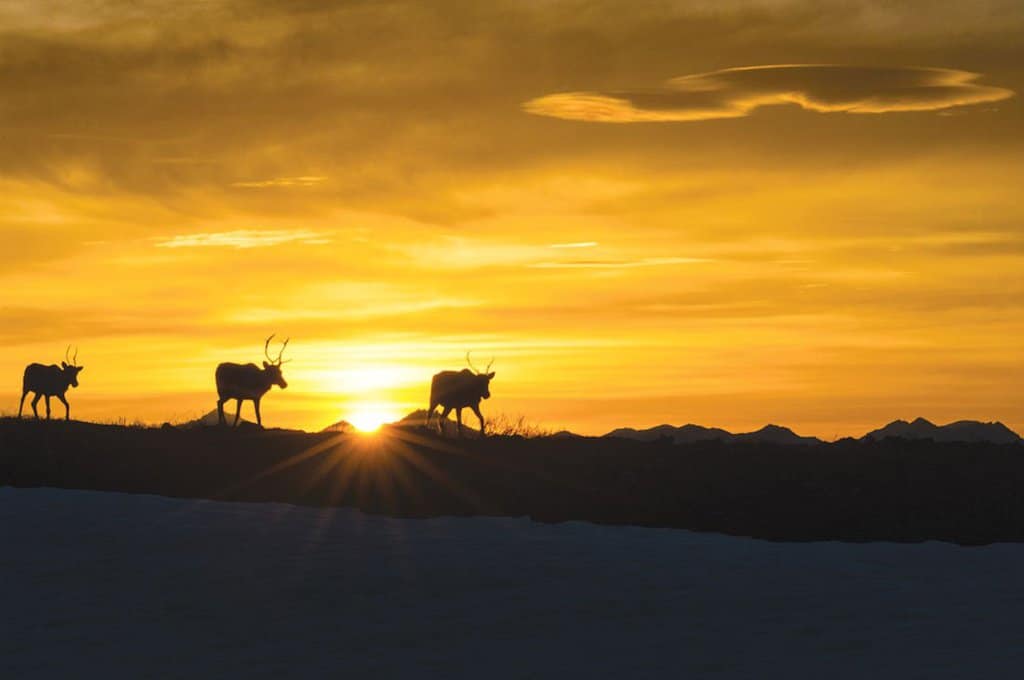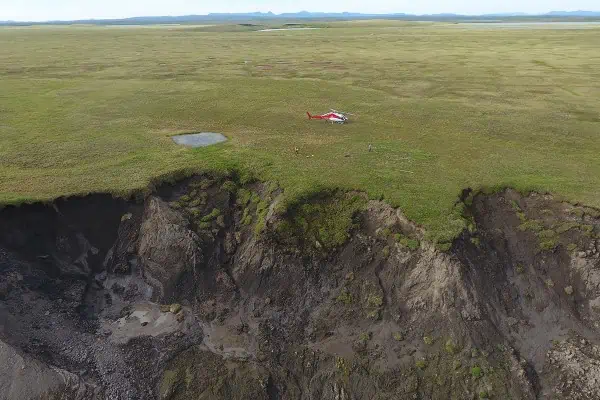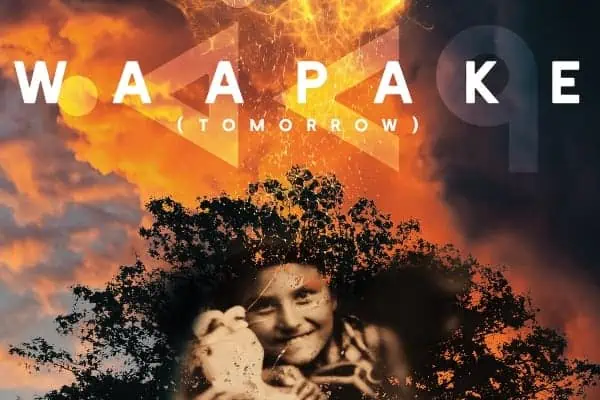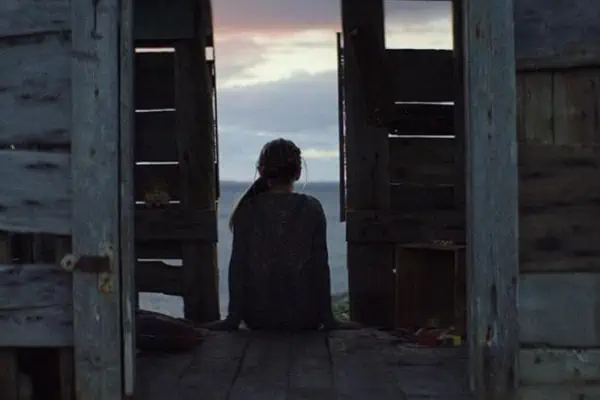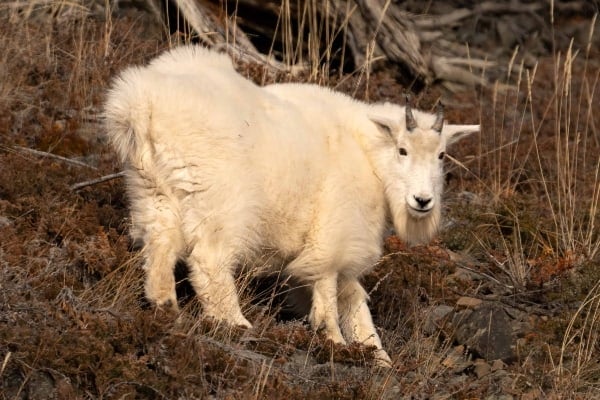I love adventure. And I love storytelling. That’s what motivates me to go on these expeditions.
The Porcupine Caribou Herd is thought to have the longest mammal migration on the planet. The image I wanted to capture is hard to describe, but while doing research on the caribou, I saw videos of them in winter, migrating in long lines of thousands. It reminded me of images of the Klondike Gold Rush a hundred years ago, where there was a line of 400 men following a trail straight up the mountain. I wanted to recreate this image, but with caribou. I wanted to create an intimate image, with the lead caribou very close to the camera, but I also wanted to be able to see a line of caribou leading down the mountain and across the valley floor as well, to give you a sense of the number of caribou and the teamwork that they employ when moving in winter.
The planning was the hard part. The longest ski trip of this type I’d done before was one night. Additionally, my expedition partner, Marty, didn’t have any winter experience. I was lucky that the most experienced ski trip expeditioner in the Yukon, Peter Heebink, is a friend of mine. He has been doing trips like this for 40 years, so I met with him a dozen times and gained 40 years of experience through him. We could never have done this without his knowledge. He was the one who advised us not to use a tent. That all you need is a good winter sleeping bag and sleeping mat. This was invaluable for us, and we loved sleeping outside. Tents fill with condensation in winter and are a huge hassle without providing you with much warmth. Our sleeping bags were so efficient that when it snowed on us, the snow wouldn’t melt on the bags, because the outside of the bag was still minus 10, while inside we were at plus 20.
Setting off, we were optimistic. The plan was to drop myself and Marty at Margaret Lake in Ivvavik National Park where we would set up a leisurely base camp and wait patiently for the 200,000 strong Porcupine caribou herd to pass through. All did not quite go as planned. A fault with the plane meant that we had to be dropped off 120 km from our intended destination and ski the rest of the way. I’ve never experienced such a sustained and hard expedition as this one. We were forced into the most intense physical and emotional journey either of us will ever experience. It would have been manageable had we been pulling 150 pounds of equipment, but we were pulling 700 pounds. We had planned for a base camp situation, but that was far from what we were faced with. After 12 hours we’d managed 10 km of skiing. Progress was slow to say the least. The snow underfoot was so soft, we kept sinking metres down, battling to pull ourselves out again. It seemed impossible. To make matters worse, Marty’s feet had turned into one huge, swollen, puss-filled blister. After the third day, we took the difficult decision to rest for a day, to allow his feet to heal somewhat. But then Marty had a brainwave.
“Maybe if we ski through the night, the cold night crust might just hold us up and we can make better time?”
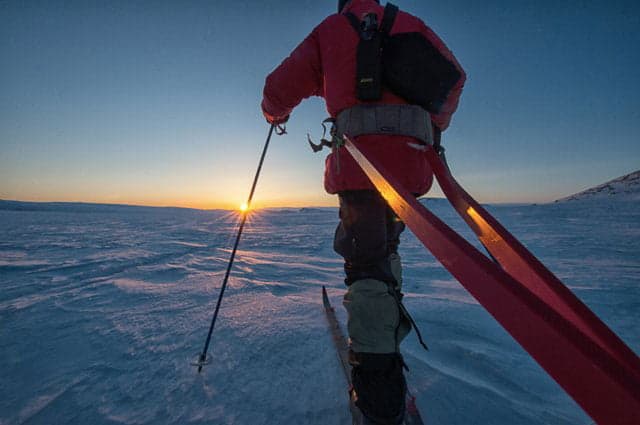
The first signs were promising. We still broke through the snow but far less often than we had before. We moved much faster. On our first night, we made 8 km and were feeling far more positive than before. It was still a battle, though. The lead skier was still doing three or four times more work than the follower and it was mentally and physically tough, but at least we were getting somewhere. By day 10, we’d basically made it. We cracked out the satellite phone to get an update as to where the caribou were. And that’s when we hit our next hurdle. The caribou had stopped migrating and were still about a week away! After the incredible push we made to get there, it was a bizarre feeling. Hilarity mixed with disappointment. All that stress and work for nothing. We had to wait anyway.
And it was at that point that Mother Nature threw us another yet another curveball. As we waited for the caribou to arrive, the weather took a turn. Summer arrived. The temperature increased by about 40 degrees, completely melting the snow. When the caribou finally arrived, they weren’t travelling in lines or in trails. They passed through in loose groups of 50, slowly grazing on the grass. My plans for the perfect photo melted with the snow.
I was disappointed, but I found it okay to deal with the fact we didn’t get the shot we wanted. Failing is simply part of the process. I know that I may spend a month chasing the perfect photo on skis and not get it, but that I may be driving down some remote road a month later and get the best caribou shot of all time. Things always work out in the end. All you can do is put the work in.
Although Marty and I have always made a pact to look back on this expedition with fondness and good memories, we did also make a pact to remember the hell it was, to ensure we never try something so stupid ever again! The pact hasn’t lasted long though. Every time the two of us meet for a beer, we start hatching plans again. Once you find your passions in what you photograph, it’s important to go out and shoot as much as you can. It’s the only way to learn. Simply go and do it. That’s why I wasn’t too upset we didn’t get the shot this time. I’m passionate about the caribou, the land and the people that live here. And if you’re passionate, you will have success. I want the Porcupine caribou herd to keep on migrating through these lands, just as they always have. And as long as they do, the chase for the perfect photo will continue.
To read more about Peter’s expedition to photograph the caribou, visit discoverinteresting.com/adversity-in-adventure/in-pursuit
